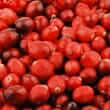Background
- There is some human evidence supporting the use of cranberry juice and cranberry supplements to prevent urinary tract infection (UTI), although most available studies are of poor quality. There are no clear dosing guidelines, but given the safety of cranberry, it may be reasonable to recommend the use of moderate amounts of cranberry juice cocktail to prevent UTI in non-chronically ill individuals.
- Cranberry has not been shown effective as a treatment for documented UTI. Although cranberry may be used as an adjunct therapy in some cases, given the proven efficacy of antibiotics, cranberry should not be considered a first line treatment.
- Cranberry has been investigated for numerous other medicinal uses, and promising areas of investigation include prevention of H. pylori infection, which causes gastrointestinal ulcers and dental plaque.
References
Natural Standard developed the above evidence-based information based on a thorough systematic review of the available scientific articles. For comprehensive information about alternative and complementary therapies on the professional level, go to . Selected references are listed below.
- Bailey DT, Dalton C, Joseph Daugherty F, et al. Can a concentrated cranberry extract prevent recurrent urinary tract infections in women? A pilot study. Phytomedicine 2007 Apr;14(4):237-41.
View Abstract - Bodet C, Grenier D, Chandad F, et al. Potential oral health benefits of cranberry. Crit Rev Food Sci Nutr 2008 Aug;48(7):672-80.
View Abstract - Crews WD Jr, Harrison DW, Griffin ML, et al. A double-blinded, placebo-controlled, randomized trial of the neuropsychologic efficacy of cranberry juice in a sample of cognitively intact older adults: pilot study findings. J Altern Complement Med 2005 Apr;11(2):305-9.
View Abstract - Elliott SP, Villar R, Duncan B. Bacteriuria management and urological evaluation of patients with spina bifida and neurogenic bladder: a multicenter survey. J Urol 2005 Jan;173(1):217-20.
View Abstract - Gettman MT, Ogan K, Brinkley LJ, et al. Effect of cranberry juice consumption on urinary stone risk factors. J Urol 2005 Aug;174(2):590-4; quiz 801.
View Abstract - Gotteland M, Andrews M, Toledo M, et al, Modulation of Helicobacter pylori colonization with cranberry juice and Lactobacillus johnsonii La1 in children.Salazar G. Nutrition 2008 May;24(5):421-6.
View Abstract - Grant P. Warfarin and cranberry juice: an interaction? J Heart Valve Dis 2004 Jan;13(1):25-6.
View Abstract - Hess MJ, Hess PE, Sullivan MR, et al. Evaluation of cranberry tablets for the prevention of urinary tract infections in spinal cord injured patients with neurogenic bladder. Spinal Cord 2008 Sep;46(9):622-6.
View Abstract - Jepson RG, Craig JC. Cranberries for preventing urinary tract infections. Cochrane Database Syst Rev 2008 Jan 23;(1):CD001321.
View Abstract - Kontiokari T, Salo J, Eerola E, et al. Cranberry juice and bacterial colonization in children--a placebo-controlled randomized trial. Clin Nutr 2005 Dec;24(6):1065-72.
View Abstract - Linsenmeyer TA, Harrison B, Oakley A, et al. Evaluation of cranberry supplement for reduction of urinary tract infections in individuals with neurogenic bladders secondary to spinal cord injury. A prospective, double-blinded, placebo-controlled, crossover study. J Spinal Cord Med 2004;27(1):29-34.
View Abstract - Neto CC, Amoroso JW, Liberty AM. Anticancer activities of cranberry phytochemicals: an update. Mol Nutr Food Res 2008 Jun;52 Suppl 1:S18-27.
View Abstract - Shmuely H, Yahav J, Samra Z, et al. Effect of cranberry juice on eradication of Helicobacter pylori in patients treated with antibiotics and a proton pump inhibitor. Mol Nutr Food Res. 2007 Jun;51(6):746-51.
View Abstract - Waites KB, Canupp KC, Armstrong S, et al. Effect of cranberry extract on bacteriuria and pyuria in persons with neurogenic bladder secondary to spinal cord injury. J Spinal Cord Med 2004;27(1):35-40.
View Abstract - Wing DA, Rumney PJ, Preslicka CW, et al. Daily cranberry juice for the prevention of asymptomatic bacteriuria in pregnancy: a randomized, controlled pilot study. J Urol 2008 Oct;180(4):1367-72.
View Abstract







